Not the Pretentious College Reviews

What would your reaction be if we told you that our college was planning to ban celebrating birthday parties in hostel rooms? What if sporting a French beard was now against the college rules? Sounds weird? Surprisingly enough, there exist colleges in our very own country that boast of tons of weird, funny, and downright messed up rules such as paying fines for low marks and irregular attendance. Even the act of “shaking hands with members of the opposite gender for more than 3 seconds” has been deemed a punishable offence.
We were interested in comparing how fucked up our college is relative to other colleges so that we can wallow in self-pity or laugh depending on what the basis for comparison is.
So in short, we’re stacking our college up against a bunch of universities and colleges from across the globe (primarily from India though) to see just how much we can succeed in destroying our happiness and peace of mind. We’ll be comparing across categories: namely, Academic and Social. That the latter even exists is a pleasant surprise we attribute to the addition of VIT to our comparison list.
We’ve surveyed a bunch of colleges from India and abroad – responses from 55 colleges in India and 14 abroad with a total o f 118 people who took part in the survey. The data we gathered was interesting, but even more so were the brutally honest opinions that we received from people, some thought-provoking and some which are downright hilarious.
Just to grab your attention, we present an infographic: a map of the world coloured by number of responses from various countries.
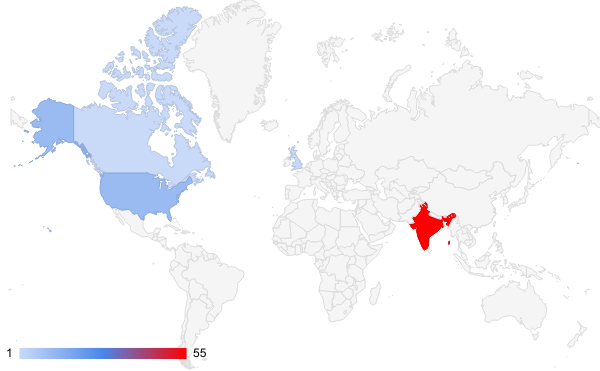
The Data
At this point, we should establish some credentiality, namely the process followed in obtaining and verifying the data that shall follow. All of the data was collected via a survey: a Google form sent to friends in various institutions with request to further redistribute. All in all, about 118 responses were recorded from 69 distinct colleges. The survey contained questions across various categories asking about the degree of freedom afforded to the respondent by the college. Oftentimes it was according to how they perceived the freedom; and as a result, the data is not strictly objective. But then again, inherent subjectivity is part and parcel of personal perception.
In order to verify the data, we took a two-pronged approach: for every institute with 3 or more distinct individual respondents, the mode of responses in each subcategory is taken to be the situation on ground; and for any fewer, manual cross-checking was done. As such, the data is more or less comprehensive and verified. And while it is a tad too small for any significant statistical analysis, it serves its purpose better than mere anecdote.
Where we stand
It should be noted that we are not trying to establish our college as “the worst decision ever”. Since we’re just trying to measure as a relative, a meaningful comparison needs to be made against some standard. Now again, given the wide variance of data, this is simply not possible. Hence comparison shall be made (as and when applicable) as follows:
- The general state of college level education, nation-wide.
- Other ‘elite’ Indian colleges, like the IITs.
- Colleges outside India, like Harvard or MIT.
And last; and most importantly – we shall hold the Institute’s current situation against the standard that we, the student body (or at least, the heavily biased Author(s) and instigating Editors), hold dear.
Social Life
Curfew Timings
Perhaps the most contentious social issue consistently raised and argued, especially in our present Indian environment, is the existence of curfew – be it the hostels, the campus, the severe disbalance between in-time requirements for boys and girls, the change in policy within the Institutes themselves depending on the whims and fancies of the wardens, and the relative laxity afforded to boys in that regard too; there exist a plethora of topics for everyone to weigh in on.
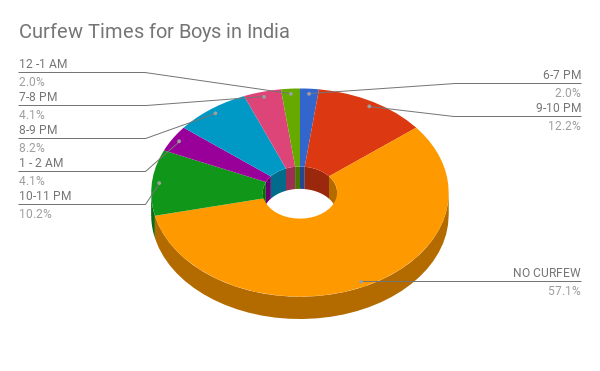
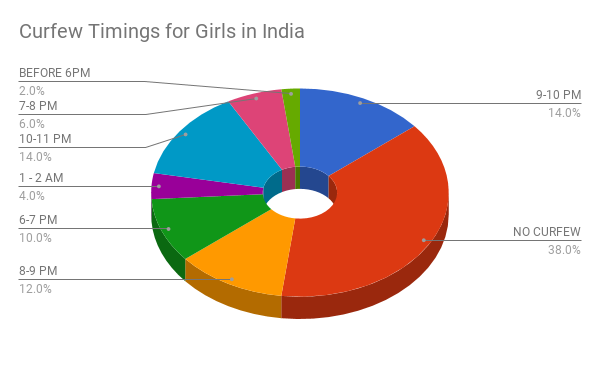
India
While an alien concept to most of us, most Indian colleges seem to have rather restrictive expected in-times for their students. On top of that, colleges with such curfews usually exhibit a gender disparity in the matter, with the Girls’ timings being often one or two, sometimes three hours before the one imposed on boys – if one is imposed on the boys to begin with. For an extreme case of Hostel Timings, consider Lovely Professional University – Women must report back to hostels by 7:30 pm in summers, and 6.30 in winters; for men, the timings are 8 pm throughout the year.[note]http://indianexpress.com/article/india/bhu-students-protest-jnu-the-campus-lines-4869005/[/note]
The Indian ‘Elite’
Other than IIT BHU, none of the the IITs report any curfew (note that in some cases the publicly available official policy says otherwise, so either there is no strict enforcement or policy has changed).
In the case of BHU, there is no reported curfew time for boys, but it ranges from 9-11 PM for girls. Moving onto BITS Pilani: only the Hyderabad campus reports a curfew time (of around 2 AM) for both genders. BIT Mesra has a curfew that changes by hostel, but the girls’ hostels have a strict in-time of 9 PM. Upon further investigation, it was found that some wardens in the boys’ hostel ignore the curfew. Either way, it is only enforced for first year students. Other colleges like CMI and Ashoka have similar rules to IIIT.
IIIT
On this regard, IIIT is very liberal and is, in fact, one of the most relaxed colleges out there, even when considered internationally. Very few other colleges appear to give students the freedom to leave campus as and when they desire.
Level of Freedom of Gender Interaction
AKA Neighbourhood Aunty Watch. Common sense would dictate that, as young adults waiting to be released into the world, college students should, at the very least, have the freedom to interact with those of the opposite sex – to ensure proper communicative faculty, if nothing else. Sanskaar says otherwise.
India
You’d think it couldn’t get worse than in VIT, where, as a survey respondent said, “You can’t shake hands for more than 3 seconds”, but you’d be wrong. There exist colleges (like Satyabhama University in Chennai) where any form of interaction in between boys and girls is forbidden – so much so that many of them have separate staircases for boys and girls “so that they don’t have to look at each other while leaving the premises.” In Panimalar Institute of Technology, cellphones are allowed but ‘romantic’ ringtones are banned. According to the warden, romantic ringtones might evoke ‘romantic’ feelings in students.[note]https://www.indiatimes.com/culture/who-we-are/9-ridiculous-college-and-hostel-rules-that-will-make-you-pull-out-your-hair-in-frustration-244348.html[/note]
The Indian ‘Elite’
None of the IITs recorded any negative response to the question – every one of them is claimed to be at least neutral, if not positive, on freedom of gender Interactions. This trend is echoed in CMI, Ashoka, all the NITs surveyed to some extent, and even Manipal.
IIIT
Here, too, IIIT fares really well. Aside from a lack of co-ed hostels as there exist in several IITs, CMI, Ashoka, and various other Indian colleges (without considering any abroad). it is on par with the best in India and miles above most in the country. One place where it’s lacking is in hostel entry for members of the opposite sex. Then again, It’s not too bad – all the messes and canteens are mixed, and the girls’ and boys’ hostels aren’t separated by a forest as they are in BIT Mesra.
Restriction on Dresses
You know you’re in the right college when the dress code becomes more important than the education they have promised to impart.
The ‘dress code’ is a major point of discussion, especially amongst Indian families and as extensively seen during the Induction Schedule Faculty-Parent interaction sessions. As students, the majority of us have worn uniforms for all of our years of schooling, and college is a fresh breath of air.
The primary arguments brought forth in defence of dress codes/uniforms in colleges are: ensuring that students wear a ‘decent dress’ and look ‘professional’. There exists obvious counterpoints to both of these arguments, neither of which will be covered here, for the fear of digressing.
India
Many local colleges still enforce a strict line which you cannot cross on what you can wear to your college each day. No shorts, no sleeveless shirts, no skirts for girls, etc. Because god forbid, someone shows their bare leg for the world to see. Christ still somehow manges to enforce such fuckall rules on what their students wear. It’s 2018, guys. SRM KTR, PES, St Xavier’s (Kolkata) are some other examples.
Elite and Outside
Dress restrictions are a thing of the past when it comes to the IITs, BITS and even the NITs. It remains non-existent in almost all colleges abroad. Even in VIT, dress restrictions are minimum if not present at all.
IIIT
It suffices to say we have no restrictions when it comes to what we wear in IIIT. We are more than good in this category. Yes, we’re talking about the most of us who roll out of bed, attend classes and go back to bed. Of course it doesn’t require you to change into a new set of clothes. Minimum effort. Sweatpants and shorts for the win.
Academics
Attendance Requirement
The alarm blares and you drag yourself out of bed. It does not matter how sick you are. It does not matter how much you wanted to compete in that basketball tournament or participate in that cultural event which you’ve thought about for weeks.You cannot afford to miss any class. ‘85% attendance’, these words haunt you every day.
Reforming regulations pertaining to attendance has been a long debated topic, complete with a large variety of slurs aimed at the teaching staff and the administrative system and more often than not, at the unfortunate soul who agreed to proxy but ultimately failed to do it. (You had but one job!)
As most of us are aware (like a cloud of doom hanging over our heads) along with poor performance in exams, grades can decrease by as much as a full letter without (or in spite of) proper excuses of absences.[note]http://www.thetimeliners.com/christ-university-and-6-other-indian-colleges-absurd-attendance-requirements[/note]
India
Many Indian institutes have followed the same too (widely recognized for this very reason: BITS Pilani and the not so well recognized: IISER Mohali).
Many cases (Ashoka, Northwestern, CMI, IIT Kanpur) have compulsory attendance whose percentage changes from course to course and usually entirely up to the professor in charge.
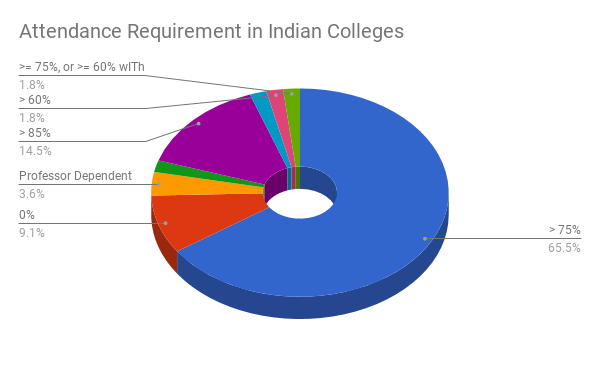
Outside
Most foreign colleges have set a precedence of 0% attendance policy, ie, the system does not punish you for what you choose to do that day (Cornell, MIT, University of Cambridge). The consequences, of course, are dealt by yourself and the system does not take any fault for it.
On the other hand, there’s the University of Dallas, Texas which maintains that absences for four consecutive classes result in a failure of the course.

IIIT
Back here in IIIT, we’d like to hear about colleges which are worse off than us and so here’s the truth: It’s pretty hard to beat us in this area but surprisingly there are people who do suffer more than us. Here’s one such example: When left to the professors, the attendance policy can get pretty bleak. IIT Kanpur, Vassar have reported instances of professors enforcing a hellish 90% minimum.
Academic Freedom
Majors and Minors – Option to switch major
Choosing a major in college still remains a crucial turning point and a hard decision which mostly cannot be revisited, dooming you to four or five (or many, many more) years of studying in a field which you have zero interest in. Conventional thinking of what a particular major entails is usually wrong leading to misled choices.
Maybe you want to change majors at your existing school. Perchance you are planning ahead, or you are just curious about your options. Or maybe you just can’t and you have no choice.
India
Most colleges including IIT Kanpur, IIT Kharagpur, Ashoka University, Arena Animation, Sp Jain School Of Global Management (Mumbai), etc allow their students to switch majors quite easily. Some colleges need prerequisite conditions including a spectacular GPA in first year (BITS Pilani) to switch. But changing majors involves too much hassle in many colleges.
Outside
All the universities we surveyed abroad have this in common: Changing majors is a piece of cake and not unusual at all.
Majors and Minors – Miscellaneous
Choosing a minor leads to a more well-rounded education and especially helps when switching to another major. Moreover it adds to one’s expertise in the field they choose to study in.
But do all colleges see it this way? Many colleges have a rigid (if not utterly set in stone) course structure and no option at all to choose a professor for the course. They cannot choose a minor (KIIT University, most medical colleges, etc), and many do not even have the freedom to construct their own timetable.
India
One of the very few colleges when it comes to academic freedom is BITS Pilani. They provide students the ability to fast-track and double-major.
Outside
Much more freedom regarding course structure, and many more options to choose and update majors, and learn under a professor of your choosing.
IIIT
Pretty good, considering there is little to no option for a formal branch change. Not many options beyond CS and related subjects, though. Timetable usually can’t be messed with.
Internet Access
Surveys showed a firm ‘yes’ when it came to internet access within college except when it came to some few sad colleges (Jadavpur University, Meghnad Saha, etc). But does it really count if there are a countless restrictions on them? 1 GB a day for students may seem as a lot but in any college which masquerades as a technological institution, unlimited internet access remains a boon and should be mandatory.
India
Ashoka University, Manipal Institute of Technology, Arena Animation etc allows only the use of 1GB per day. VIT, has managed to lose in this category too, by allowing for only 10GB per month.
BITS Pilani, IISER Pune, IIT Kanpur, PES University have all reported blocking of certain sites including porn and torrent. Lady Shri Ram College For Women have only half the campus WiFi enabled. St. Xavier’s in Kolkata has “capped internet speed to the order of 100 kbps”.
Outside
For all the colleges we surveyed abroad, none of the colleges reported any restriction on bandwidth or time of usage when it came to Internet access.
IIIT
One of the only disadvantages faced is the fact that there is no WiFi access at the hostels. Otherwise, except for first year students, everyone gets internet access through ethernet ports.
Conclusion
After an attempted neutral data analysis of 118 responses from 69 colleges, we have done our best at presenting a semi-formal, possibly biased conclusion on restrictions imposed across various categories by colleges across the world. And a comparison of ours against them. And – to be honest – it isn’t that bad. Sure, the assignments suck our souls and PT/Yoga has resulted in serious sleep deficiency for a significant portion of the college; but IIT Kanpur has PT at 6 as well and we’re nothing compared to MIT (Massachusetts) when it comes to assignments. As students of the college we’re luckier than most and unluckier than some. And there isn’t really much to do but to accept the situation as is and strive to improve it as far as possible.

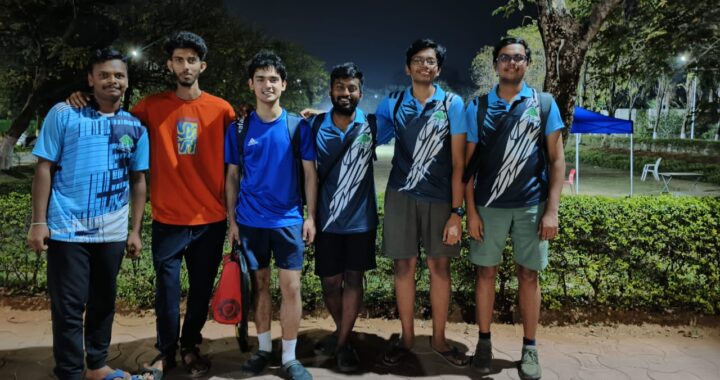 A perspective on sports in IIIT
A perspective on sports in IIIT  Practical Guide to Moving on
Practical Guide to Moving on  From Country to Electronic Pop…
From Country to Electronic Pop… 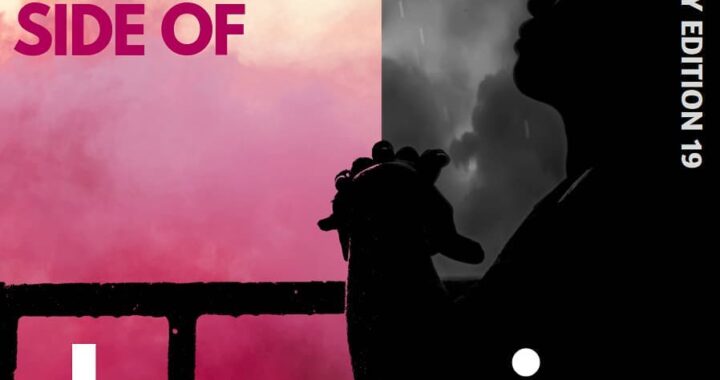 The Healthiness of Depression
The Healthiness of Depression  Deep Impact
Deep Impact  BOOOONEE!
BOOOONEE!  Paintings of IIIT
Paintings of IIIT 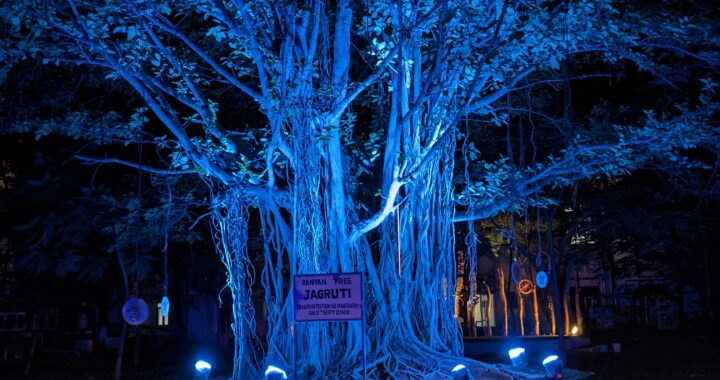 The Tale of Jagruti
The Tale of Jagruti  Cleaning up the Mess?
Cleaning up the Mess?
As a fresher in a private university in the same state as VIT(iykyk), and hearing the plight of other students, comparing Indian universities to their counterparts abroad was something that I always thought would be interesting. It would help prove the outright gender discrimination, moral policing, and lack of freedom given to adults in our universities and hostels(except the elite ones of course). The social life of universities like these are pathetic to the say the least. If these universities and colleges had spent half the amount of effort and energy in improving their atrocious standards of education and infrastructure(when compared to leading universities around the world), they would have been truly world-class and wouldn’t have to market the same. For all this hullabaloo around distractions and discipline, none of these them feature among the top 500-600 universities around the world. Not just the universities, the parents are equally to blame in these practices, where they either keep quiet, or actively support the same in the different names of safety, discipline and so on. This is one of the the first articles I have come across that really portrays the same in a very to-the-point manner with all facets covered(though one factor missed is exams) in a very simple manner. Loved this and really appreciate the effort you put in to do this!